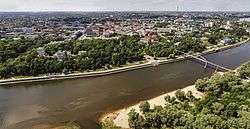Gomel
| Homel Гомель | |||
|---|---|---|---|
|
The grounds of the Gomel Palace | |||
| |||
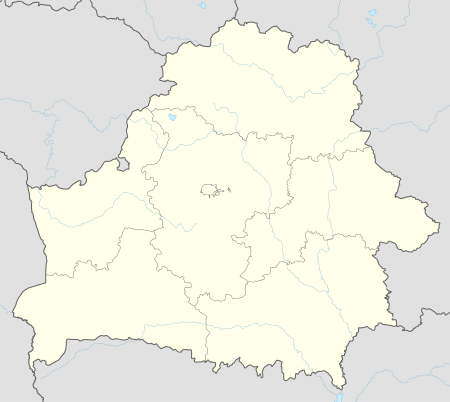 Homel Location in Belarus | |||
| Coordinates: 52°26′43″N 30°59′03″E / 52.44528°N 30.98417°ECoordinates: 52°26′43″N 30°59′03″E / 52.44528°N 30.98417°E | |||
| Country |
| ||
| Subdivision | Gomel Voblast | ||
| Founded | 1142 | ||
| Government | |||
| • Mayor | Petro Kirichenko | ||
| Area | |||
| • Total | 135.34 km2 (52.26 sq mi) | ||
| Elevation | 138 m (453 ft) | ||
| Population (2015) | |||
| • Total |
526,872 | ||
| • Density | 4,258.4/km2 (11,029/sq mi) | ||
| [1] | |||
| Time zone | FET (UTC+3) | ||
| Postal code | 246xx, 247xxx | ||
| Area code(s) | +375 232(2) | ||
| License plate | 3 | ||
| Website | Official website | ||
Homel (Belarusian: Го́мель, translit.: Homyel’, Łacinka: Homiel, pronounced [ˈɣomʲelʲ], Russian: Го́мель, translit.: Gomel, pronounced [ˈɡomʲɪlʲ],[2] Polish: Homel, Yiddish: Homl ,האָמל, Lithuanian: Gomelis, Latvian: Gomeļa) is the administrative centre of Gomel Voblast and the second-largest city in Belarus. It has a population of 515,325 (2013 census)[3] and its area is 135.3 km2.
History
Origin of the name
There are at least six versions of the origin of the city’s name. One of the best known is that the name is derived from the name of the Homeyuk stream, which flowed into the Sozh river near the foot of the hill where the first settlement was founded. Other Belarusian cities’ names are formed on these lines: for example, Minsk’s name is derived from the river Menka, Polatsk’s – from the Palata river, Vitsebsk’s – from the Vitsba river. In historical sources from 1142 to the 16th century Homel is named as Hom', Homye, Homiy, Homey, Homyi. These forms are tentatively explained as derivatives of an unattested *gomŭ of uncertain meaning.[4] The modern form of the city’s name has been used only since the 16th–17th centuries.
According to the version, popular in the Soviet period, the name of the city came from the following story: raftsmen, swimming on the rafts on the river Sozh, warning each other about the danger to run into a sandy shallow, shouted «Ho! Ho! Mel!». According to the latest version offered by some modern researchers, the name of Homel came from the ancient Belarus form of a greeting: «Dats u homel» that means «to knock a fist at a shoulder».[5]
Homel under Kievan Rus'

Homel was founded at the end of the 1st millennium AD on the lands of the Eastern Slavic tribal union of Radimichs. It lays on the banks of the Sozh river and the Gomeyuk stream. Sozh's high left bank cut with canyons made a natural fortification. Some time Gomel was the capital of the Gomel Principality, then it went to the Principality of Chernigov. Gomel is first mentioned in the Hypatian Codex under the year of 1142 as the territory of Chernigov princes. For some time, Gomel was held after being captured by Smolensk prince Rostislav Mstislavich but then was re-captured by Iziaslav III Davidovich, after whose death it belonged to Sviatoslav Olgovich and then to Sviatoslav's son Oleg. Under Oleg, Homel went to the Principality of Novhorod-Siverskyi. The next owner of Homel was Igor Svyatoslavich – the hero of "The Tale of Igor's Campaign". During this period, the town was a fortified point and the centre of volost. In the 12th–13th centuries the city's area was not less that 40 ha, it had various crafts developed and was connected by trading ways with the cities of Northern and Southern Rus'. From archeological data, the city was badly damaged during the Mongol-Tatar assault in the first half of the 13th century.
Homel under Great Duchy of Lithuania and Polish-Lithuanian Commonwealth

In 1335 Homel region was joined to the Great Duchy of Lithuania by Algirdas. In 1335–1406 it was under the ownership of prince Patricia Narymuntovich and his sons, in 1406–1419 the city was ruled by Great Duke's deputies, in 1419–1435 it belonged to prince Svitrigaila, in 1446–1452 to prince Vasiliy Yaroslavich, in 1452–1483 to Mozhaysk prince Ivan Andreyevich and in 1483–1505 to his son Semyon, who transferred Homel to the Grand Duchy of Moscow.
During the Second Muscovite-Lithuanian War of 1500–1503 Lithuania tried to return Homel and other lands transferred to Moscow, but suffered defeat and lost one-third of its territory. In 1535 Lithuanian and Polish forces under Jerzy Radziwiłł, Jan Tarnowski and Andrzej Niemirowicz re-captured Homel after the surrender of Moscow's deputy, D. Shchepin-Obolensky. In the same year, Great Duke of Lithuania Sigismund Kęstutaitis founded the Gomel Starostwo. In reference to the peace agreement of 1537 Gomel together with its volost remained a Lithuanian possession. In 1535–1565 Homel is the centre of starostwo, from 1565 Homel is in the Rechytsa Powiat of the Minsk Voivodeship.

In 1560, the city's first coat of arms was introduced. In 1569, Homel became part of the Polish-Lithuanian Commonwealth. From this moment the city has become the arena of numerous attacks and battles between Cossaks, Russia and Polish-Lithuania Commonwealth. In 1572 Homel Starostwo was given to B. Sapega. At the beginning of 1570s, Homel was captured by the forces of Ivan the Terrible, but in 1576 it was re-captured by J. Radziwiłł. In 1581 Homel was again attacked by Russian troops, and in 1595–1596 it was in the hands of Severyn Nalyvaiko's Cossaks.
After the beginning of the struggle against the Orthodox Christianity in Lithuania the Orthodox Nikolayevskiy Cathedral was closed by the order of Greek Catholic Eparch Josaphat Kuntsevych in 1621. In 1633 the city was besieged by the Cossaks of Bulgakov and Yermolin, in 1648 was captured by the Golovatskiy's Cossack detachment, in 1649 by Martyn Nebaba's detachment. After that Gomel got through several besieges in 1651 but in 1654 was captured by Ivan Zolotarenko's detachment. He and his sons had been holding the city till 1667 and then they began to serve under Alexis of Russia, however, after the Truce of Andrusovo Homel at last returned to the Polish-Lithuanian Commonwealth, where it first belonged to M. K. Radziwiłł (Radzivll) and then till the annexation by the Russian Empire – to the Czartoryski family. During the Great Northern War Russian forces under Aleksandr Danilovich Menshikov stood in Homel. In 1670, Homel got the Magdeburg rights. Towards the middle of the 17th century, the city fell into crisis mainly due to the struggles mention above. It suffered a lot of damage, the population severely decreased, and a lot of crafts disappeared.
Homel in the Russian Empire
 Pyotr Alexandrovich Rumyantsev-Zadunaisky 1725 - 1796
Pyotr Alexandrovich Rumyantsev-Zadunaisky 1725 - 1796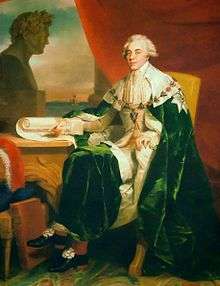 Nikolay Petrovich Rumyantsev 1754 - 1826
Nikolay Petrovich Rumyantsev 1754 - 1826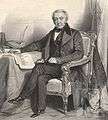 Sergei Petrovich Rumyantsev 1755 - 1838
Sergei Petrovich Rumyantsev 1755 - 1838 Ivan Fyodorovich Paskevich 1782 - 1856
Ivan Fyodorovich Paskevich 1782 - 1856 Fyodor Ivanovich Paskevich 1823 - 1903
Fyodor Ivanovich Paskevich 1823 - 1903 Irina Ivanovna Paskevich 1835 - 1925
Irina Ivanovna Paskevich 1835 - 1925
Gomel in the period when the Russian Empire marked by rapid population growth, urban infrastructure, industrial capacity.
.jpg)
Homel became part of the Russian Empire in the first partition of the Polish-Lithuanian Commonwealth in 1772 and was confiscated by the imperial treasury. In 1775, Empress Catherine II gave Gomel and Gomel eldership in the eternal hereditary possession of Russian military commander Pyotr Rumyantsev.
Peter and Paul Cathedral, designed by architect John Clark, was built 1809 - 1819. Nikolay Rumyantsev opened the first high school, hotel courtyard, glass, tile, distilleries, weaving and spinning factories, built a church, a synagogue, a pharmacy, a hospice and a permanent wooden bridge over the Sozh river.
After the death of Nikolay Rumyantsev, the city became the owner of his brother Sergei Petrovich Rumyantsev. However, due to lack of money, Sergei laid Gomel in the state treasury of the Russian Empire. Subsequently, not being able to pay the debt and sell treasury. -What does this mean? - Palace of the city acquired Prince Ivan Paskevich, which gave Nicholas I (1838), the rest of the city. Paskevich founded around the palace park, which has become a unique natural object. In 1856, the estate passed to his son Fyodor Ivanovich Paskevich.
By 1913, Gomel was a major industrial city and counted 104.500 inhabitants.
Soviet period
On 14 January 1919, Gomel was occupied by the Red Army, which led to a major revolt. The insurgents took control of strategic objects and executed members of the Soviet leadership of the city. The rebels were defeated.
In 1919, Gomel became the centre created by the Gomel governorate in the Russian Soviet Federative Socialist Republic. After the end of the hostilities, the restoration of industry and transport began. In the 1920s, a number of large businesses were created: ship repair workshops, a factory named "Polespechat", a shoe factory named "Trud", a bakery, and the first phase of the municipal power plant.
By 1940, there were 264 industrial enterprises.
World War II
During World War II, Gomel was under Nazi occupation from August 19, 1941 to November 26, 1943. The city was liberated by Rokossovsky's Belorussian Front during the Gomel-Rechitsa Offensive. Eighty percent of the city was destroyed. The population of Gomel had dropped by a factor of ten. According to the data of the registry, the population of Gomel numbered less than 15,000 of inhabitants, compared to 144,000 inhabitants back in 1940.
The post-war period
After the war, restoration of Gomel began promptly. The majority of pre-revolutionary buildings were lost. City streets were considerably expanded, and buildings in Stalinist Empire style were erected. In 1950, almost all of the pre-war enterprises resumed their work.
Chernobyl Disaster
As a result of the catastrophe at the Chernobyl nuclear power plant on 26 April 1986, Gomel suffered from radioactive contamination. This significantly worsened the ecological situation and the socio-economic crisis, which began in the USSR in the late 1980s. This caused a sharp decline in living standards and gradual of depopulation that lasted until the early 21st century.
At the beginning of the 21st century, to overcome and study the consequences of the catastrophe at Chernobyl, a scientific-practical centre of radiation medicine and human ecology was built in Gomel.
Establishment of the Republic of Belarus
On July 27, 1990, the state sovereignty of the Belarusian Soviet socialist Republic was declared. Gomel became a city in the independent state of the Republic of Belarus.
In the first half of the 1990s, Gomel, like the whole of Belarus, was seized with an acute socio-economic crisis: the standard of living fell sharply, the death rate began to exceed the birth rate, the volume of industrial production fell sharply, and the crime rate increased. Since 1996, the situation in the country and in Gomel gradually began to stabilize and improve.
Population of the city
Population
of Gomel in 1775–2014 years
| 1775 | 5.000 |
| 1858 | 13.700 |
| 1880 | 23.600 |
| 1897 | 36.800 |
| 1913 | 104.500 |
| 1925 | 81.900 |
| 1931 | 109.900 |
| 1939 | 139.000 |
| 1943 | less 15.000 |
| 1959 | 168.270 |
| 1965 | 218.000 |
| 1970 | 272.253 |
| 1975 | 337.000 |
| 1979 | 382.785 |
| 1985 | 465.000 |
| 1989 | 500.846 |
| 1992 | 517.000 |
| 1999 | 475.000 |
| 2006 | 479.900 |
| 2008 | 493.700 |
| 2010 | 484.300 |
| 2012 | 507.700 |
| 2013 | 514.968 |
| 2014 | 521.225 |
| 2015 | 526.873 |
The city's population amounted to 515.325 (2013 census).[3] This fact indicates a positive population growth and the gradual overcoming of demographic crisis, which began in 1993.
After the annexation of Gomel to the Russian Empire and the creation of the pale of settlement, Gomel is gradually becoming one of the centres of resettlement of the Jewish population of Russia. According to the 1897 census, 55% of the population of Gomel were Jews. In 1903 in Gomel there was a mass violent action against the Jewish population of the city. From that moment began a gradual reduction of the Jewish population of the city. Mass emigration of Jews from Gomel came at the end of the 1980s — beginning 1990s.
Geography
Gomel is situated in the southeastern part of the country, on the right bank of Sozh river, 302 km (188 mi) to the South-East from Minsk, 534 km (332 mi) to the East from Brest, 171 km (106 mi) to the South from Mogilev, 237 km (147 mi) to the West from Bryansk and 111 km (69 mi) to the North from Chernihiv.
The relief of the city as a whole is flat. On the right bank of the river, it is gradually decreasing plain water-glacial and fluvial terraces of the Sozh river. The left bank is low-lying alluvial plain. The slope of the relief going from north to south (the highest elevation of 144 meters above sea level on the northern outskirts of Gomel, the lowest 115 m - water boundary Sozh river.) Novobelitskiy district of Gomel, located on the left bank of the river, has elevations by an average of 10 –15 meters lower than the northern and central parts of the city.
In the flood plain on the left bank of the Sozh, many kilometers of beaches are located
Climate
Climate of Gomel the moderate and continental. Warm summer and soft winter that is caused by frequent arrival of warm sea air masses from Atlantic and the dominating western transfer.
| Climate data for Gomel | |||||||||||||
|---|---|---|---|---|---|---|---|---|---|---|---|---|---|
| Month | Jan | Feb | Mar | Apr | May | Jun | Jul | Aug | Sep | Oct | Nov | Dec | Year |
| Record high °C (°F) | 9.6 (49.3) |
15.8 (60.4) |
21.5 (70.7) |
29.3 (84.7) |
32.5 (90.5) |
34.0 (93.2) |
37.9 (100.2) |
38.9 (102) |
32.2 (90) |
27.5 (81.5) |
18.0 (64.4) |
11.6 (52.9) |
38.9 (102) |
| Average high °C (°F) | −2.0 (28.4) |
−1.2 (29.8) |
4.6 (40.3) |
13.2 (55.8) |
20.2 (68.4) |
23.2 (73.8) |
25.2 (77.4) |
24.3 (75.7) |
18.1 (64.6) |
11.3 (52.3) |
3.6 (38.5) |
−1.0 (30.2) |
11.6 (52.9) |
| Daily mean °C (°F) | −4.5 (23.9) |
−4.2 (24.4) |
0.7 (33.3) |
8.4 (47.1) |
14.8 (58.6) |
17.9 (64.2) |
19.8 (67.6) |
18.7 (65.7) |
13.0 (55.4) |
7.1 (44.8) |
0.8 (33.4) |
−3.3 (26.1) |
7.4 (45.3) |
| Average low °C (°F) | −6.9 (19.6) |
−7.1 (19.2) |
−2.8 (27) |
4.0 (39.2) |
9.6 (49.3) |
12.9 (55.2) |
14.8 (58.6) |
13.6 (56.5) |
8.7 (47.7) |
3.7 (38.7) |
−1.4 (29.5) |
−5.6 (21.9) |
3.6 (38.5) |
| Record low °C (°F) | −35.0 (−31) |
−35.1 (−31.2) |
−33.7 (−28.7) |
−13.6 (7.5) |
−2.5 (27.5) |
−0.2 (31.6) |
6.0 (42.8) |
1.2 (34.2) |
−3.2 (26.2) |
−12.0 (10.4) |
−21.7 (−7.1) |
−30.8 (−23.4) |
−35.1 (−31.2) |
| Average precipitation mm (inches) | 34 (1.34) |
33 (1.3) |
33 (1.3) |
38 (1.5) |
56 (2.2) |
80 (3.15) |
90 (3.54) |
61 (2.4) |
58 (2.28) |
56 (2.2) |
47 (1.85) |
40 (1.57) |
626 (24.65) |
| Average rainy days | 8 | 7 | 10 | 13 | 14 | 16 | 14 | 12 | 14 | 14 | 13 | 9 | 144 |
| Average snowy days | 18 | 17 | 10 | 2 | 0.1 | 0 | 0 | 0 | 0.03 | 2 | 10 | 16 | 75 |
| Average relative humidity (%) | 86 | 83 | 77 | 66 | 64 | 69 | 70 | 71 | 77 | 81 | 87 | 88 | 77 |
| Mean monthly sunshine hours | 54 | 74 | 131 | 176 | 264 | 264 | 261 | 246 | 168 | 115 | 44 | 31 | 1,828 |
| Source #1: Pogoda.ru.net[6] | |||||||||||||
| Source #2: NOAA (sun only 1961–1990)[7] | |||||||||||||
Transportation

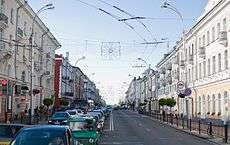
Public transportation is represented by over 1,000 city buses and trolleybuses. Public transportation is generally inexpensive ($14 monthly). Over 210 million passenger rides were registered in 2006.[8] Taxi services ($10 for a one-way intra-city ride) are available 24 hours a day. The city is an important railroad hub in the southeastern part of Belarus being positioned midway on the Minsk-Kiev railroad link. Strategic location of Gomel near the border with Russia and Ukraine provides a direct connection to the vast railroad network.
The Gomel trolleybus network opened on 20 May 1962 and consists of 23 routes (not counting variations). On 15 December 2010 after laying the contact network through the streets of Egorenko, Sviridov and Chechersk opened new trolley line to the Terminus "Neighborhood "Klinkowski" that resulted in the change of trolleybus routes No. 9, 16, 17. The length of the street network with the transport lines is about 74 km (46 mi) and the total length of trolleybus routes - 475 km (295 mi) Rolling stock represented by machines ACSM-201, ACSM-321, ACSM-213, ACSM-101, ZIU-682. Тhe number of bus routes more than 60 total length of about 670 kilometers, for a number of routes are Express options. Rolling stock - mainly buses MAZ-105, MAZ-107, MAZ-103 and Ikarus 280 (actively write off), less presents MAZ-104, MAZ-203, MAZ-206, 2014 actively purchased buses extra large capacity, low-MAZ-215 . Express routes are bus Rodemich-A. Acts 24 minibus route the lines are mostly vans Ford Transit, GAZelle, Mercedes-Benz, Peugeot.
Gomel Airport is located 8 km (5 mi) north-east from the city.
Sports
To overcome the destructive consequences of the Chernobyl disaster and to improve the health of Belarusians, the state pays considerable attention to sports. Gomel has the necessary sports facilities.
Athletics is of incredible importance to the city of Gomel. It is home to a wide range of sports facilities that have been developed and improved in recent years. These facilities, including eight stadiums and the Ice Palace, which has two ice arenas, support common activities such as hockey, track and field, and football (American Soccer). The Central Stadium is the home of Gomel’s local football club, FC Gomel. Gomel hosts multiple international competitions in these facilities, the annual “Bells of Chernobyl” competition being one of the many.[9] In addition to sports facilities, Gomel has a multitude of Olympic Reserve Schools, which is more commonly referred to as sports schools.
Many of Gomel's sports schools prepare exceptional athletes starting from a young age. Numerous champions have been trained by schools such as these. For example, one school, Gomel’s Olympic Reserve Number 4, has trained 97 World and European champions as well as two Olympic athletes. Gomel State College of Olympic Reserve, on the other hand, trains coaches rather than athletes. From this school, 44 graduates have participated in the Olympics, European championships, and World championships.[9] Gomel also participates in the Deaflympics and, between the years 2007-2009, has been awarded: two gold medals, one silver medal, and two bronze medals.[10]
Educational centre
Since 1990, P.O. Sukhoy Homiel State Technical University and Homiel State Medical University have been attracting many international students from countries around world, including United States, Germany, China, India, Pakistan, Sri Lanka, Syria, Russia, Ukraine, Egypt, Iran and Latin America. Homiel State Medical University provides classes in both English and Russian. Many famous scientists work here as senior lecturers.
People
- Yuri Foreman, the first Israeli boxing world champion
- Leonid Geishtor, Belarusian Olympic champion and world champion sprint canoer
- Mikhail Grabovski, professional ice hockey player, currently with the New York Islanders
- Andrei Gromyko, a Soviet Minister of Foreign Affairs (1957–1985) and Chairman of the Presidium of the Supreme Soviet (1985–1988)
- Aaron Lebedeff, (1873–1960) Yiddish singer
- Andrey Melnichenko, Russian businessman and billionaire
- Dick Manning, American songwriter
- Seryoga, rapper
- Sergei Sidorsky, Prime Minister of Belarus from 2003 until December 2010
- Kanstantsin Sivtsov, professional road cyclist
- Lev Vygotsky (1896–1934), psychologist
- Iryna Yatchanka, Belarusian Olympic medal winner
- Yitzchak Eizik Epstein (1770–1857), rabbi of the Hassidic community in Gomel, author of several works of Chabad philosophy[11]
- Larisa Shchiryakova, journalist
- Gennady Korotkevich, competitive programming champion
- Elena Ginko, athlete
International relations
Twin towns and sister cities
Gomel is twinned with:
|
|
References
- Notes
- ↑ "Belarus - The regions of the Republic of Belarus as well as all cities and urban settlements of more than 10,000 inhabitants.". City Population. Retrieved 2014-04-11.
- ↑ "Definition of Homyel' – Merriam-Webster Online Dictionary". M-w.com. 2012-08-31. Retrieved 2014-01-15.
- 1 2 "Belstat.gov.by" (PDF). Retrieved 2014-01-15.
- ↑ Этимологический словарь славянских языков: праславянский лексический фонд, под ред. О.Н. Трубачева, вып.7 (Москва, 1980), стр.21.
- ↑ "УО "Гомельский государственный политехнический колледж" - официальный Web-сайт". gomel.belstu.by. Retrieved 2016-02-19.
- ↑ "КЛИМАТ ГОМЕЛЯ" (in Russian). Weather and Climate (Погода и климат). Retrieved 28 November 2015.
- ↑ "Gomel Climate Normals 1961–1990". National Oceanic and Atmospheric Administration. Retrieved 28 November 2015.
- ↑ "Gomel Transportation Statistics (Russian language)". Web.archive.org. 2007-12-13. Archived from the original on 13 December 2007. Retrieved 2014-01-15.
- 1 2 "Gomel Oblast Tourism and sport | Gomel region | Gomel". www.gomel-region.by. Retrieved 2016-11-12.
- ↑ "УО "Гомельский государственный политехнический колледж" - официальный Web-сайт". gomel.belstu.by. Retrieved 2016-11-12.
- ↑ R' Eizik of Homel. Chabad.org. Accessed 20 April 2014.
- ↑ "Twinning". Aberdeen City Council. Retrieved 2 March 2008.
- ↑ "National Commission for Decentralised cooperation". Délégation pour l’Action Extérieure des Collectivités Territoriales (Ministère des Affaires étrangères) (in French). Retrieved 2013-12-26.
- ↑ "Radom - Miasta partnerskie" [Radom - Partnership cities]. Miasto Radom [City of Radom] (in Polish). Archived from the original on 2013-04-03. Retrieved 2013-08-07.
- ↑ "Radom - miasta partnerskie" (in Polish). radom.naszestrony.pl. Retrieved 2013-08-07.
External links
| Wikivoyage has a travel guide for Gomel. |
| Wikimedia Commons has media related to Homel. |
- Photos on Radzima.org
- History of Gomel
- The Korma-Report (Korma-Studie) of the German Research Centre Juelich (Forschungszentrum Jülich) published new data on internal radiation exposure of the inhabitants of a region close to Gomel more than 20 years after the Chernobyl disaster. The data show a significant decrease of the exposure. Resettlement may even be possible in prohibited areas provided that people comply with appropriate dietary rules.
- Statistical information about Gomel at the Wayback Machine (archived 24 October 2007)
- Map of Gomel
- Infobelarus
- The murder of the Jews of Gomel during World War II, at Yad Vashem website.
